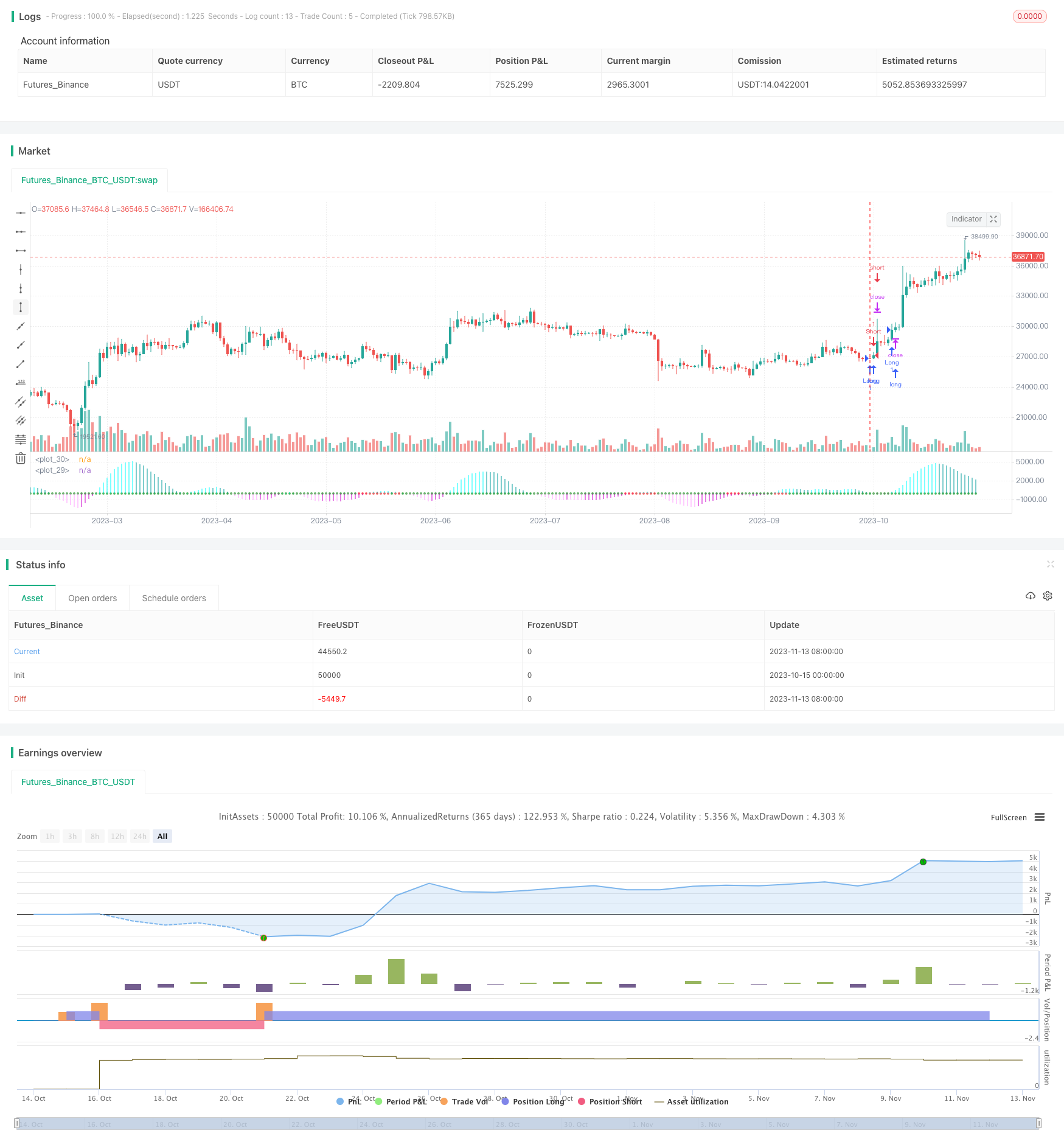
概述
该策略运用CT TTM指标来识别价格的趋势,采用追踪止损来控制风险。策略名为“基于CT TTM指标的趋势跟踪策略”。
策略原理
该策略使用CT TTM指标来判断价格趋势。具体来说,策略中定义了以下变量:
- e1 - 中间带的中间价位
- osc - 通过计算e1周期收盘价与e1的差值并进行线性回归得到的振荡器
- diff - 布林带和肯特纳通道之间的差值
- osc_color - 指定osc的不同颜色
- mid_color - 指定diff的不同颜色
如果osc上穿0轴,则显示为绿色,表示多头;如果osc下穿0轴,显示为红色,表示空头。
当osc为正时,做多;当osc为负时,做空。
该策略使用振荡器osc判断趋势方向,并以diff来判断多空力度。当振荡器osc上穿0轴时,认为行情由下向上,做多;当osc下穿0轴时,认为行情由上向下,做空。
策略优势分析
该策略具有以下优势:
使用CT TTM指标判断趋势,准确率较高。CT TTM指标综合考虑了移动平均线、布林带和肯特纳通道,能够有效识别价格趋势。
应用振荡器来判断 specific 多空节点,可以避免在非趋势区域发出错误信号。振荡器能够有效过滤价格小幅震荡对交易信号的影响。
采用追踪止损来控制风险,可以有效限制每单损失。策略中在入场后及时设置止损,可锁定盈利并最大程度避免亏损扩大。
策略参数较少,容易优化。该策略仅依赖长度length一个参数,便于快速测试找到最佳参数组合。
绘图功能完善,可以清晰看到信号。策略采用不同颜色区分多空信号及力度,直观显示趋势判断结果。
策略风险分析
该策略也存在以下风险:
CT TTM指标在某些市场情况下可能发出错误信号,导致交易亏损。当价格出现剧烈波动时,指标可能产生错误的多空信号。
振荡器发生背离时,可能出现交易信号错误。当价格已经反转但振荡器尚未转向时,会造成错误信号。
追踪止损过于激进可能造成无谓损失。当止损点设置过近时,正常波动可能触发追踪止损而被迫离场。
该策略仅适用于趋势性较强的品种,不适合盘整市。策略以趋势交易为主,在盘整震荡市场中效果不佳。
优化过度可能导致曲线拟合。参数优化时应注意避免过度优化导致的回测曲线拟合问题。
策略优化方向
该策略可以从以下几个方面进行优化:
综合多个指标进行组合,提高信号准确率。可以加入MACD、KDJ等其他指标,优化entry信号。
加入止损方式优化模块,使止损更加智能化。可以测试参数自适应追踪止损、挂单止损等止损方式。
优化资金管理策略,测试固定份额、凯利公式等资金管理方式。优化后可以在保证单笔风险的前提下提高资金使用效率。
针对特定品种进行参数优化,提高策略适应性。根据不同交易品种的特点微调参数,能够提高策略对特定品种的拟合度。
增加机器学习算法,实现策略的自适应学习。使用RNN、LSTM等对策略进行增强,提高策略的自适应能力。
总结
本策略运用CT TTM指标判断趋势方向,以振荡器白数值作为entry信号,采取追踪止损管理风险。策略优势是准确率较高、参数优化容易,但也存在指标失灵、止损过于激进等风险。未来可通过多指标组合、止损优化、资金管理优化等方法进行提升,使策略效果更佳。
/*backtest
start: 2023-10-15 00:00:00
end: 2023-11-14 00:00:00
period: 1d
basePeriod: 1h
exchanges: [{"eid":"Futures_Binance","currency":"BTC_USDT"}]
*/
//@version=2
strategy("CT TTM Squeeze")
length = input(title="Length", defval=20, minval=0)
bband(length, mult) =>
sma(close, length) + mult * stdev(close, length)
keltner(length, mult) =>
ema(close, length) + mult * ema(tr, length)
// Variables
e1 = (highest(high, length) + lowest(low, length)) / 2 + sma(close, length)
osc = linreg(close - e1 / 2, length, 0)
diff = bband(length, 2) - keltner(length, 1)
osc_color = osc[1] < osc[0] ? osc[0] >= 0 ? #00ffff : #cc00cc : osc[0] >= 0 ? #009b9b : #ff9bff
mid_color = diff >= 0 ? green : red
// Strategy
long = osc > 0
short = osc < 0
if long
strategy.entry("Long", strategy.long)
if short
strategy.entry("Short", strategy.short)
plot(osc, color=osc_color, style=histogram, linewidth=2)
plot(0, color=mid_color, style=circles, linewidth=3)